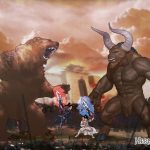#technology #Web3.0
“Builders should focus on enabling Web 3.0 e-commerce”— Paul Ebeling
Web 3.0 threatens to break the stranglehold of retail giants on e-commerce, delivering greater decision-making power to consumers. A key element involved in facilitating this transition again comes down to implementing a frictionless user experience that offers the benefits of Web 3.0 with the look, feel and convenience that users have already come to expect from Web 2.0.
To use an example, new financing options, such as “buy now, pay later” services, which are a staple of Web 2.0 e-commerce, will further spur adoption of Web 3.0 for e-commerce. Research shows that offering a “buy now, pay later” option at checkout increases conversion rates by seven percent versus traditional card transactions.
Another way to capture the attention of shoppers is through engagement via decentralized autonomous organizations (DAOs). Increasingly, we are seeing brands and influencers launching DAOs as a way to turn customers into community members, granting them decision-making power over contests, new product features and sometimes sources of income from shared investments
Bear markets are not new phenom, which means history has lessons for us. This includes the history of the internet itself. When the tech bubble burst in 2000 following the euphoria of the late-1990s, that was not the end of the internet. Rather, with the noise and nonsense of projects with bad fundamentals filtered out, a new generation of stronger projects emerged.
The new wave featured improved e-commerce, increased financial service offerings, enhanced infrastructure, and improved UX. That means this is an exciting moment.
History is full of bulls and bears trading places, and the bulls that emerge from this period may affect daily life for decades to come.
Have a prosperous week, Keep the Faith!









